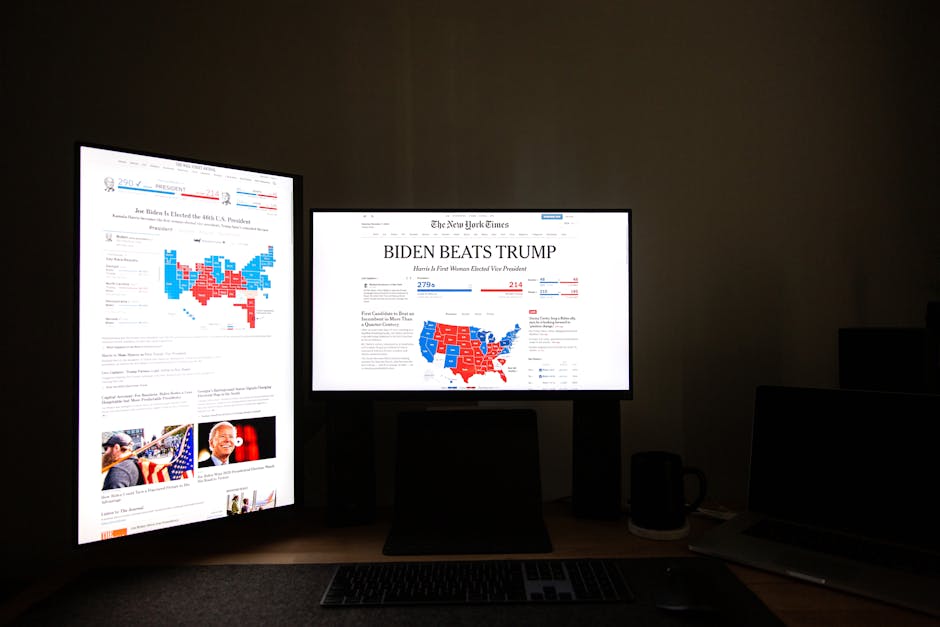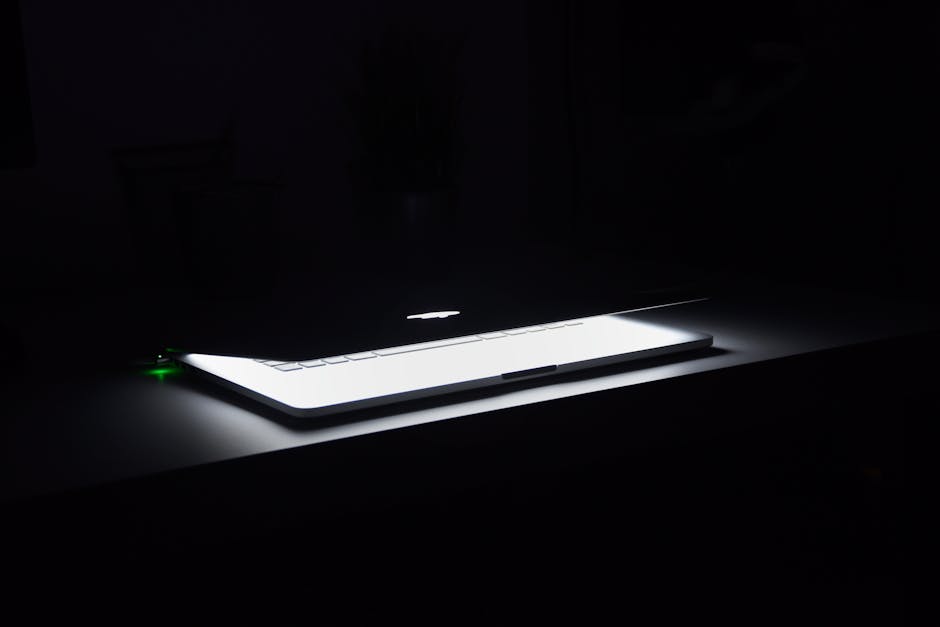12 Surprising Secrets to Elevate PPC Landing Pages
12 Surprising Secrets to Elevate PPC Landing Pages
Discover the dozen dynamic and daring techniques to transform your PPC landing pages into powerful conversion machines.
Elevate your campaigns with compelling headlines, irresistible call-to-actions, and captivating visuals.
Streamline form fields, enhance page load speed, and set up conversion tracking for maximum impact.
Dive into the surprising secrets that will elevate your PPC game and drive unparallelled results.
Key Takeaways
- Compelling headlines and irresistible call-to-actions are crucial for capturing the reader’s attention and motivating immediate action.
- Ad copy alinement and relevance ensure consistency in messaging across ads and landing pages, creating a seamless user journey.
- Captivating visuals, including high-quality images and a mix of photos, graphics, and videos, enhance the overall user experience and aline with brand values and messaging.
- Trust-building elements such as real-life testimonials and trust signals like security badges and partner logos can instil confidence in your brand and improve conversion rates.
Compelling Headlines

When creating compelling headlines for PPC landing pages, you should aim to capture the reader’s attention within seconds. This can be achieved by incorporating attention-grabbing hooks and compelling messaging. Your headline serves as the first impression, so make it count.
It should clearly convey what your offer is about and why it’s beneficial to the reader. A good headline creates a sense of urgency or curiosity, prompting the reader to delve deeper into the content. Keep it concise and impactful, ensuring that it alines with the overall message of your ad.
To craft compelling headlines, start by understanding your target audience and what resonates with them. Use language that speaks directly to their needs and desires. Incorporate keywords that are relevant to their search intent, increasing the likelihood of capturing their interest.
Remember, the headline sets the tone for the rest of the content on your landing page, so it needs to be cohesive and persuasive.
As you strive to create attention-grabbing headlines, the next crucial element to focus on is crafting irresistible call-to-actions.
Irresistible Call-to-Actions

To create irresistible call-to-actions, focus on compelling language that motivates visitors to take immediate action. Craft your call-to-action with language that creates a sense of urgency and emphasises the benefits of taking the next step. Use action-oriented verbs that prompt visitors to act, such as ‘Get Started,’ ‘Try Now,’ or ‘Learn More.’ By using persuasive language, you can guide visitors towards a specific action, leading to improved conversion rates.
Consider the placement of your call-to-action as well. Ensure that it’s prominently displayed and stands out on the landing page. Use contrasting colours, bold fonts, or strategic positioning to draw attention to the call-to-action button. Additionally, make sure that the language in your call-to-action alines with the overall messaging of the landing page to maintain consistency and clarity.
Persuasive Ad Copy Alinement

When crafting your ad copy, it’s essential to ensure that it directly relates to your landing page content. Consistency in messaging across your ad and landing page helps reenforce your message and builds trust with your audience.
Consider the user’s journey from seeing your ad to landing on your page, and aim for a seamless transition to keep them engaged.
Ad Copy Relevance
Ensure your ad copy alines persuasively with the content of your PPC landing pages to maximise relevance and engagement. To achieve this, focus on keyword targeting and ad relevance to create a seamless transition for your audience. Here’s how to make it happen:
- Keyword Targeting
- Research and select relevant keywords that reflect the intent of your target audience.
- Incorporate these keywords strategically into your ad copy to ensure alinement with your landing page content.
Messaging Consistency
By ensuring that your ad copy alines persuasively with the content of your PPC landing pages, you can achieve messaging consistency that resonates with your audience and drives engagement.
Brand messaging is crucial in creating a unified voice and image for your company. When your ad copy and landing page content are alined, it reenforces your brand messaging, creating a cohesive experience for your audience. This consistency influences audience perception, conveying a sense of professionalism and trustworthiness.
When your messaging is consistent, it helps to build a strong brand identity and reenforces your value proposition. By resonating with your audience through consistent messaging, you can increase the effectiveness of your PPC campaigns and improve the overall performance of your landing pages.
User Journey Cohesion
To achieve user journey cohesion and maximise engagement, aline your ad copy persuasively with the content of your PPC landing pages. When your ad copy seamlessly connects with your landing page content, you create a consistent and compelling customer experience that encourages user engagement.
Here are some actionable tips to help you aline your ad copy with your landing pages effectively:
- Understand Your Audience: Tailor your ad copy to resonate with the specific needs and desires of your target audience.
- Use language and messaging that speaks directly to your audience’s pain points and aspirations.
- Highlight the unique selling points of your product or service in your ad copy to create a seamless transition to your landing page content.
Captivating Visuals

When creating captivating visuals for your PPC landing pages, focus on high-quality images that grab attention and enhance the overall user experience. Visual storytelling through compelling imagery can effectively communicate your brand’s personality to visitors. Use visuals that aline with your brand’s values and messaging to create a cohesive and impactful experience. Incorporating brand personality into your visuals helps to establish a connexion with your audience and leaves a lasting impression.
Consider using a mix of photos, graphics, and videos to create a visually engaging and diverse experience for users.
High-quality visuals not only capture attention but also contribute to the overall user journey cohesion. They can guide visitors through the page, highlighting key messages, and prompting them to take desired actions. Striking a balance between aesthetics and functionality is crucial to ensure that visuals not only look good but also serve a purpose in guiding users towards your conversion goals.
Transitioning into the subsequent section about ‘streamlined form fields’, consider how visuals can complement the form fields and further enhance the user experience.
Streamlined Form Fields

When it comes to your PPC landing pages, simplifying your form fields and optimising the form length can make a significant impact.
By streamlining the form fields, you can reduce friction and make it easier for visitors to complete the form.
Keep in mind that shorter forms tend to yield higher conversion rates, so consider the essential information you truly need from your visitors.
Simplify Form Fields
You should streamline form fields to enhance the user experience and increase conversions on your PPC landing pages. Simplifying form fields can significantly improve the overall user experience, making it easier for visitors to complete the desired actions and increasing the likelihood of conversion.
To optimise your form fields, consider the following:
-
Reduce the Number of Fields: Minimise the number of required fields to only the essentials, such as name and email address. Users are more likely to complete shorter forms, leading to higher conversion rates.
-
Implement Autofill Functionality: Utilise autofill to simplify the process for users and reduce the effort required to complete the form. Autofill functionality enhances user experience and encourages form completion, boosting conversion rates.
Optimise Form Length
To optimise form length, streamline your form fields to enhance user experience and boost conversions on your PPC landing pages. Shortened forms can significantly improve your conversion rates by reducing friction for users.
When implementing conversion optimisation techniques, consider asking for only essential information. For instance, if you’re offering a whitepaper download, you may only need the user’s name and email address. By eliminating unnecessary fields, you make it easier and quicker for users to complete the form, resulting in higher conversion rates.
Trust-Building Elements

How can trust-building elements enhance the effectiveness of your PPC landing pages?
Incorporating trust-building testimonials and credibility badges can significantly increase the credibility of your landing pages, making visitors more likely to convert. Here are some ways these elements can elevate your PPC landing pages:
-
Trust Building Testimonials:
-
Real-life testimonials from satisfied customers can instil confidence in your brand and products.
-
Ensure that the testimonials are specific and highlight the benefits or results achieved, making them more persuasive.
-
Credibility Badges:
-
Display trust signals such as security badges, industry certifications, or partner logos to reassure visitors about the legitimacy of your business.
-
Place these badges strategically near the call-to-action to provide a visual assurance of security and reliability.
By incorporating these trust-building elements, you can establish a stronger connexion with your audience and alleviate any doubts they may have, ultimately leading to improved conversion rates.
Now, let’s delve into the next section about ‘mobile optimisation techniques’.
Mobile Optimisation Techniques

When it comes to mobile optimisation for your landing pages, there are a few key techniques that can significantly enhance the user experience.
First, focussing on responsive design is crucial to ensure that your pages look and function well on various mobile devices.
Additionally, implementing strategies to improve loading speed and strategically placing call-to-action buttons can make a substantial impact on your PPC campaign’s success.
Responsive Design Tips
Implementing mobile optimisation techniques can significantly improve the performance of your PPC landing pages, ensuring a seamless experience for your users across all devices. Here are some responsive design tips to enhance your landing pages:
-
Image Optimisation
-
Compress images to reduce file sizes without compromising quality.
-
Use responsive images to ensure they adapt to different screen sizes, preventing distortion and slow loading times.
-
Colour Psychology
-
Choose colours that evoke the desired emotional response from your audience.
-
Ensure text is easily readable by using high-contrast colour combinations for foreground and background.
Fast Loading Strategies
To achieve optimal performance for your PPC landing pages on mobile devices, use fast loading strategies that prioritise user experience and minimise loading times. Start by implementing image compression techniques to reduce file sizes without sacrificing quality. This will help your pages load faster, especially on slower mobile connexions.
Additionally, enable browser caching to store elements of your landing pages, such as images, CSS, and JavaScript files, on the user’s device. This way, when visitors return to your page, the browser can retrieve these elements from the cache, reducing the need to download them again and speeding up the loading process.
By prioritising image compression and browser caching, you can ensure that your PPC landing pages load quickly and provide a seamless experience for mobile users.
As you optimise your PPC landing pages for mobile, it’s essential to consider the placement of your call-to-action (CTA) buttons to maximise user engagement and conversions.
Call-To-Action Placement
Optimise your user engagement and conversions by strategically placing your call-to-action (CTA) buttons on mobile devices.
When it comes to button placement, ensure that CTAs are easily accessible without requiring excessive scrolling. Implementing a sticky CTA button that remains visible as users scroll can significantly increase conversions.
Moreover, consider utilising colour psychology to make your CTA buttons stand out. Use contrasting colours that grab attention and create a sense of urgency. For instance, a vibrant colour for the CTA button can make it more noticeable and encourage clicks.
A/B Testing Strategies

To improve the effectiveness of your PPC landing pages, conduct A/B testing to analyse different variations of your page’s elements. A/B testing allows you to compare two versions of a webpage to determine which one performs better. When conducting A/B tests, consider experimenting with colour psychology and button placement to see which combinations yield the best results. Use warm colours like red, orange, or yellow for your call-to-action buttons to evoke a sense of urgency, or try cooler tones like blue or green for a more calming effect. Additionally, test different placements for your call-to-action buttons, such as above the fold, at the bottom of the page, or as a sticky element. Below is an example of an A/B testing plan to help you get started:
| Elements to Test | Variation A | Variation B |
|---|---|---|
| Call-to-Action Button | Red colour, below the fold | Green colour, above the fold |
| Button Placement | Bottom of the page | Sticky element |
| Headline | Short and punchy | Longer and more descriptive |
Page Load Speed Enhancements

Consider implementing page load speed enhancements to further improve your PPC landing page’s user experience and conversions.
Two effective strategies for optimising page load speed are image compression and browser caching.
-
Image CompressionCompress images to reduce file size without sacrificing quality. Use tools like TinyPNG or JPEG Optimiser to optimise your images for web viewing. This ensures that your landing page loads quickly without compromising visual appeal.
-
Browser CachingLeverage browser caching to store static resources such as images, CSS, and JavaScript files on visitors’ devices. By enabling caching, returning visitors will experience faster load times as their browsers retrieve stored data instead of downloading it again.
By implementing image compression, you can significantly reduce the size of your landing page’s images, leading to faster load times. Additionally, enabling browser caching allows returning visitors to experience improved load speeds, enhancing their overall browsing experience. These strategies work in tandem to create a seamless and efficient user experience, ultimately contributing to higher conversions on your PPC landing page.
As you optimise your page load speed, it’s also crucial to set up robust conversion tracking to monitor the impact of these enhancements on your PPC campaign’s performance.
Conversion Tracking Setup

To enhance your PPC landing page’s performance, you should set up robust conversion tracking to monitor the impact of the page load speed enhancements on your campaign’s effectiveness. Conversion tracking allows you to measure the success of your advertising efforts by tracking the actions users take after clicking on your ad. By implementing conversion tracking, you can gain insights into which aspects of your landing page are contributing to conversions, helping you make data-driven decisions to optimise your campaign’s performance.
Attribution modelling plays a crucial role in conversion tracking as it helps you understand the various touchpoints in a user’s journey that lead to a conversion. This knowledge is invaluable for refining your PPC landing page to better cater to the needs and behaviours of your target audience.
With conversion tracking and attribution modelling in place, you can gain a deeper understanding of how your PPC landing page is contributing to your overall campaign goals. This data-driven approach allows you to make informed adjustments to your landing page, ensuring that it’s effectively driving conversions and maximising the return on your advertising investment.
Transitioning into the subsequent section about ‘dynamic keyword insertion,’ these insights can also inform the implementation of dynamic keyword insertion strategies to further enhance your landing page’s relevance and effectiveness.
Dynamic Keyword Insertion

After setting up robust conversion tracking for your PPC landing page, you can seamlessly integrate dynamic keyword insertion to tailor your ad’s headline and text to match the specific search terms users input. This powerful strategy allows for ad customisation and ensures keyword relevance, maximising the impact of your PPC campaign.
Here’s how you can make the most of dynamic keyword insertion:
-
Customise Headlines: By inserting the user’s search term into your ad’s headline, you can create a personalised experience that immediately resonates with the user. This level of ad customisation can significantly increase click-through rates and improve overall campaign performance.
-
Tailor Ad Text: In addition to the headline, dynamically inserting keywords into the ad text itself can further enhance relevance and engagement. Crafting ad copy that directly reflects the user’s search query fosters a sense of connexion and demonstrates the value of your offering, driving higher conversion rates.
Remarketing Tactics

Implement dynamic remarketing to re-engage website visitors who’ve previously interacted with your PPC landing page, increasing the likelihood of conversion. By utilising personalised recommendations and behavioural targeting techniques, you can tailor your ads to the specific interests and behaviours of individual users. This approach allows you to deliver highly relevant content to users who’ve already shown interest in your products or services, reminding them of what they liked and nudging them towards making a purchase.
Personalised recommendations involve showcasing products or services that are related to what the user previously viewed on your landing page. This could include featuring items from their abandoned shopping cart or suggesting similar products based on their browsing history. Behavioural targeting techniques enable you to analyse user behaviour and preferences, allowing you to present ads that aline with their interests.
These strategies not only enhance user experience but also increase the chances of conversion by keeping your brand top of mind and presenting compelling offers to re-engage potential customers. By implementing dynamic remarketing with personalised recommendations and behavioural targeting techniques, you can maximise the impact of your PPC campaigns and drive higher conversions.
Frequently Asked Questions
How Can I Ensure My Landing Page Alines With My Overall Brand Messaging and Values?
To ensure your landing page alines with your brand messaging and values, focus on brand consistency and clear messaging. Incorporate your brand’s values into the content and design of the landing page for strong alinement.
What Are the Best Practises for Optimising Landing Pages for Voice Search?
Looking to optimise landing pages for voice search? Ensure your content is tailored for spoken queries and consider mobile responsiveness. By adapting to voice search trends, you can better cater to the needs of your audience.
How Can I Use Emotional Triggers in My Landing Page Design to Increase Conversions?
To increase conversions, use emotional storytelling and visual imagery in your landing page design. Create personalised experiences based on conversion psychology. Engage your audience’s emotions to drive action and improve your PPC results.
What Are Some Innovative Ways to Personalise Landing Pages for Different Audience Segments?
To personalise landing pages for different audience segments, consider using dynamic content that speaks directly to each group’s needs. By tailoring user experience and conversion strategies, you can create a more engaging and effective journey for your visitors.
How Can I Effectively Integrate User-Generated Content Into My Landing Page to Build Trust and Credibility?
To effectively integrate user-generated content into your landing page for trust building, consider showcasing customer testimonials, reviews, and social media posts. Incorporate your brand’s values into the content to strengthen your landing page branding.
Conclusion
Now that you’ve uncovered these 12 surprising secrets, it’s time to take your PPC landing pages to new heights.
With compelling headlines, irresistible CTAs, and captivating visuals, you’ll be soaring above the competition.
Streamline your form fields, enhance page load speed, and set up conversion tracking to keep the momentum going.
Implement dynamic keyword insertion and remarketing tactics to keep your audience engaged.
Get ready to watch your conversions take flight!
Contact us to discuss our services now!
